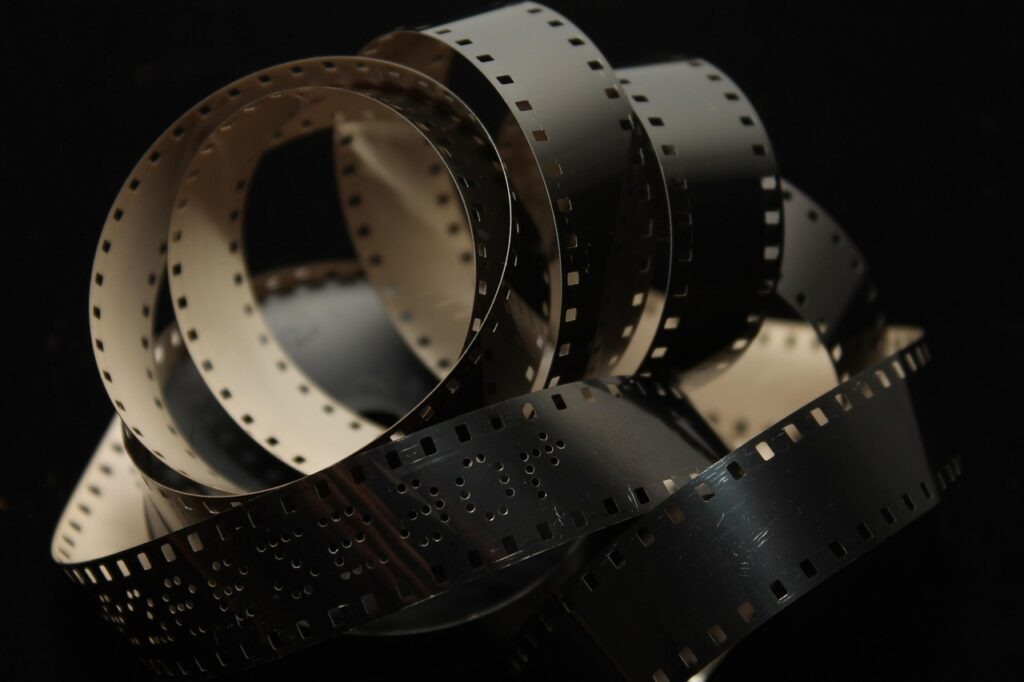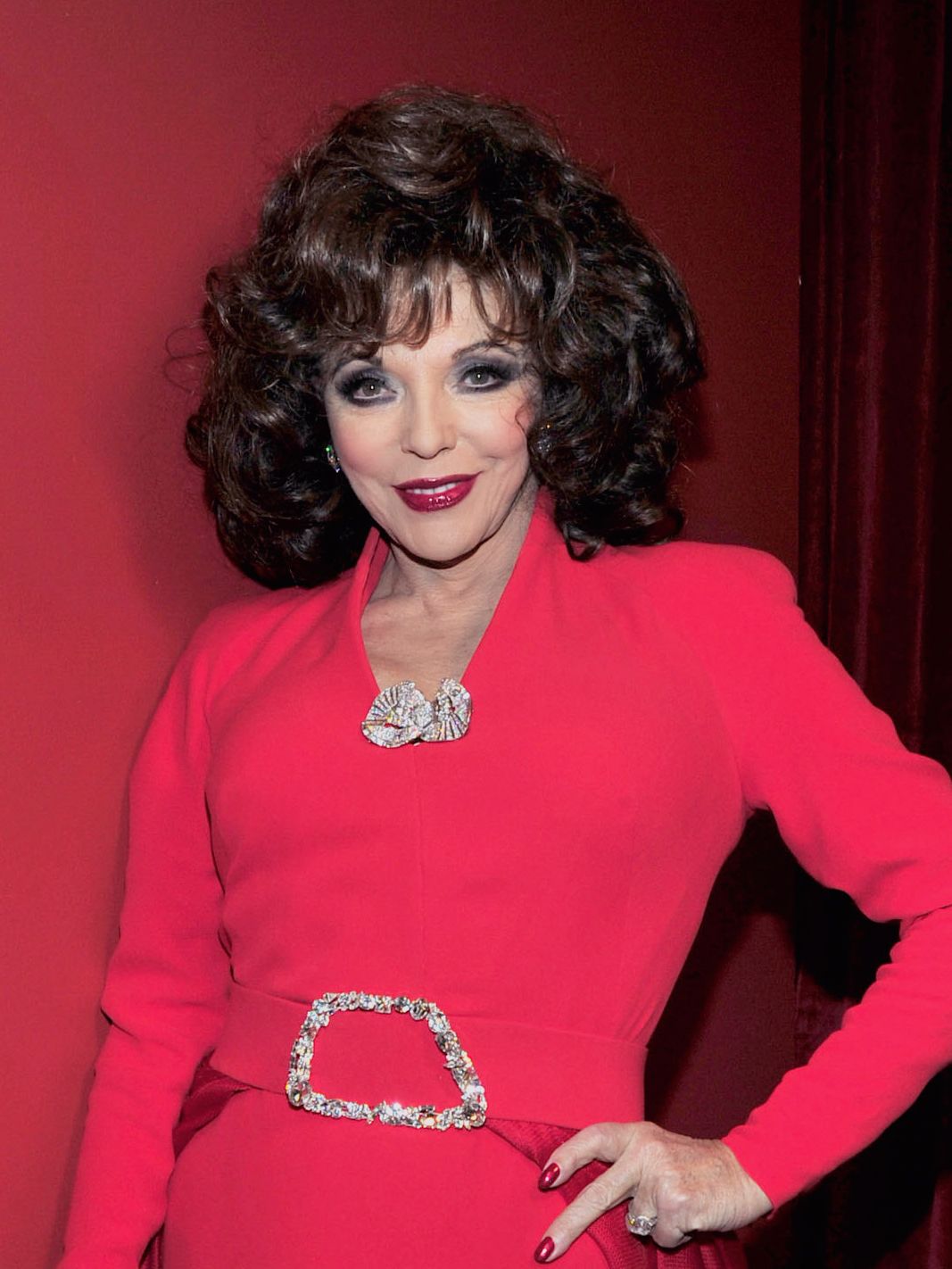The 1970s, a decade often romanticized and critically revered, stands as a golden age in American filmmaking, a period where the traditional studio system yielded to the audacious visions of “Film Brats” and independent auteurs. From gritty urban dramas to mind-bending midnight movies and socially conscious narratives, the cinematic landscape of these ten years was remarkably fertile, challenging audiences with diverse, often bleak, yet undeniably beautiful reflections of American life. It was an era that redefined genres, introduced iconic characters, and cemented the reputations of directors and actors who would go on to shape cinema for decades to come.
Indeed, the sheer abundance of great movies that emerged from this span is mind-boggling, consistently namechecked by generations of cinephiles. This was when we learned to be scared of sharks and masked slashers, when underdogs proved their mettle even without conventional victories, and when film became an interactive, communal experience. These films weren’t just entertainment; they were documents of a wild, wacky, and weird decade, capturing the zeitgeist with an honesty and artistry that remains unparalleled.
In this deep dive, we revisit 15 such masterpieces that have not only stood the test of time but continue to resonate, influence, and captivate new audiences. Prepare to journey back to a time when filmmaking was an art form in full, glorious bloom, where every frame told a story, and every story left an indelible mark. These are the films that ensure the classics are, truly, never outdated.
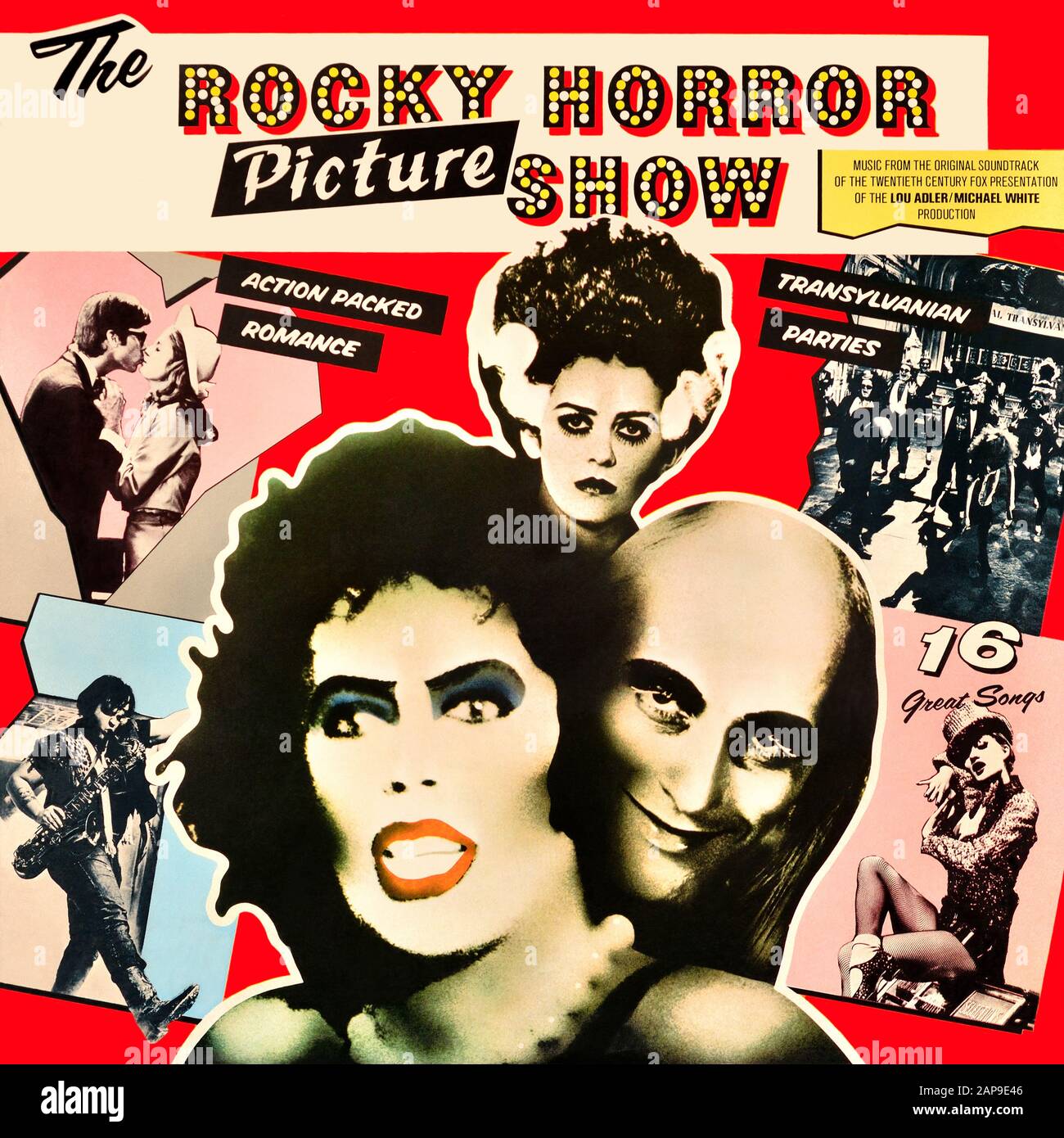
1. **’The Rocky Horror Picture Show’ (1975)**: There were “midnight movies” before the big-screen version of Richard O’Brien’s tongue-in-cheek stage show, but this film would come to both define and refine the entire concept of filmdom cults. Assembled from the spare parts of science fiction double features, musical theater, and underlined passages of “Notes on Camp,” it created a phenomenon unlike anything seen before. Its after-hours screenings transformed into interactive cosplay gatherings, fostering a unique communal experience that cemented its legendary status.
The film plunges lost innocents Barry Bostwick and Susan Sarandon into a world of freaks, geeks, and ual fluidity, all orchestrated by O’Brien himself as the hunchbacked handyman Riff-Raff. Their initial resistance is, of course, futile, as they encounter a cast of unforgettable characters. The narrative playfully dissects genre conventions, blending horror, sci-fi, and musical elements with audacious glee, proving that liberation was just a “jump to the left — and then a step to the ri-iii-iiight — away.”
At the heart of its enduring appeal is Tim Curry’s iconic portrayal of Dr. Frank-N-Furter, the mad scientist in fishnets who is capable of making anyone shiver in “antici…pation.” Curry’s performance, alongside the film’s audacious themes and unforgettable musical numbers, crafted a cultural touchstone. “The Rocky Horror Picture Show” isn’t just a movie; it’s a vibrant, ever-evolving ritual that celebrates individuality, theatricality, and the sheer joy of shared cinematic experience, making it a timeless counter-culture classic.
Read more about: Beyond the Screen: The Most Infamous Cinematic Moments That Ignited Chaos in Theaters and Triggered Real-World Turmoil
2. **’Saturday Night Fever’ (1977)**: John Badham’s “Saturday Night Fever” is so intrinsically linked with the late ’70s disco craze that it has become its visual shorthand. If one were to look up “disco” in the dictionary, it’s often joked that a picture of John Travolta in his iconic white leisure suit, right hand pointing toward heaven, would be prominently featured. This film transcended mere musical trend; it took the “Welcome Back, Kotter” kid and transformed him into a genuine star, captivating mainstream America with what had previously been an underground club culture.
Beyond the pulsating Bee Gees soundtrack and the kinetic dance scenes, which remain vivid time capsules of an era, “Saturday Night Fever” delves into a surprisingly gritty and bleak coming-of-age narrative. It introduces us to Tony Manero, a 19-year-old from Brooklyn’s Bay Ridge, who, by day, sells paint and navigates the complexities of his Italian-American family. His transformation into a god on the dance floor each night is a stark contrast to the limitations and frustrations of his daily existence.
The film is, at its core, a story about a young man struggling to outgrow his knucklehead friends, his restrictive neighborhood, and his own limited set of options. It’s a powerful exploration of aspiration, identity, and the yearning for something more, set against the backdrop of a cultural phenomenon. The memorable warning, “Just, y’know, watch his hair, ok?! He worked on it a long time,” encapsulates the character’s meticulous attention to his public persona, highlighting the pressures and desires of youth in a rapidly changing world.
Read more about: The Director’s Chair: Unpacking the High-Stakes World of Hollywood Firings and How Creative Differences Reshaped Cinematic History
3. **’Cooley High’ (1975)**: “Cooley High,” set in 1964 amidst the Civil Rights Movement, stands as a pivotal coming-of-age tale, offering a refreshing and vital perspective during a decade often dominated by sensationalized Blaxploitation films. Directed by Michael Schultz, this movie chose to pivot away from the prevalent stories of , crime, and drugs, instead focusing on the rich inner lives and enduring bond of a group of young Black high schoolers in Chicago. It was a groundbreaking move that virtually redefined the perception of what a Black film could be during the 1970s.
The narrative follows the burgeoning poet Preach, played by Glynn Turman, and his college-bound best friend Cochise, portrayed by Lawrence Hilton-Jacobs, through a series of relatable teenage hijinks. From sneaking out of class to navigating fights at house parties, the film beautifully captures the universal experiences of adolescence while embedding them within a specific cultural and historical context. The vibrant back catalog of Motown music provides a powerful and authentic score, further immersing the audience in the era.
This film’s dedication to exploring the deep currents of friendship and community not only distinguished “Cooley High” from its more sensationalistic contemporaries but also established a new paradigm for Black cinema. It offered a nuanced portrayal of young Black men, celebrating their dreams, their vulnerabilities, and the strength of their camaraderie. Its impact resonated deeply, demonstrating that stories centered on genuine human connection and personal growth held immense power and relevance, securing its place as an essential American classic.

4. **’F for Fake’ (1973)**: Orson Welles, a master of cinematic illusion and compelling storytelling, is at his most artfully slippery in “F for Fake,” an essay film that showcases his remarkable gift for weaving plummy tall tales. Transplanting his characteristic charm from the talk-show circuit to a feature-film format, Welles embarks on a fascinating journey that begins with a focus on the notorious art forger Elmyr de Hory. However, in true Welles fashion, the film quickly iris-backs to transform into a much broader and profound meditation.
This cinematic exploration delves into the very nature of truth itself, dissecting the myths we construct and the stories we tell ourselves to imbue our lives with meaning and purpose. Welles masterfully blurs the lines between fact and fiction, questioning authenticity in art and life with playful intellectual rigor. The enigmatic Oja Kodar, Welles’ partner, looms intriguingly in the background, her presence adding another layer of mystique to the proceedings, whether she is clothed or unclothed.
“F for Fake” is a delightful head-trip, a reminder that an unbiased look at Welles’ rich catalog yields more than just “the Greatest Film of All Time.” Even as what some might consider a minor gem in his oeuvre, this film shines brightly, offering a unique glimpse into the mind of a cinematic genius grappling with deep philosophical questions through an inventive, non-linear narrative. Its audacious structure and witty commentary ensure its lasting relevance, proving Welles’ enduring capacity to provoke and entertain.
Read more about: Beyond the Screen: The Most Infamous Cinematic Moments That Ignited Chaos in Theaters and Triggered Real-World Turmoil
5. **’Ganja and Hess’ (1973)**: Born from an invitation by an independent film company seeking a blaxploitation project, novelist, playwright, director, and actor Bill Gunn delivered something entirely different with “Ganja and Hess.” Far from the “Black vampire quickie akin to Blacula” his backers desired, Gunn crafted a profound symphony of Afro-Caribbean heritage, voodoo rituals, Christian guilt, homoerotic allusions, and intense ual tension. His refusal to conform to commercial expectations resulted in a unique and challenging cinematic experience.
The plot centers on Hess Green, an anthropologist portrayed by Duane Jones, who also famously starred in “Night of the Living Dead.” Hess drinks the blood of an assistant, played by Gunn himself, who has committed suicide. This act transforms Hess, leading him into a complex relationship with the assistant’s wife, Ganja, played by Marlene Clark, when she arrives to investigate. Their evolving connection forms the emotional core of this distinct horror masterpiece.
Gunn’s unique camerawork and garish visuals elevate the film, making it as much an art film as an indie horror. Its rich thematic tapestry and bold aesthetic choices garnered rave reviews at the 1973 Cannes Film Festival, a testament to its artistic merit. Today, “Ganja and Hess” is properly recognized as a classic, lauded for its innovative storytelling and its courageous subversion of genre tropes, solidifying Bill Gunn’s legacy as a visionary filmmaker who dared to defy conventions.
6. **’Vanishing Point’ (1971)**: Among the pantheon of stoner desert-highway movies, “Vanishing Point” carves out its own legendary space. Richard C. Sarafian, a veteran of “Twilight Zone,” directed a “midnight movie” that could give anyone a contact buzz, immersing audiences in a high-octane, existential chase across the American West. The film stars Barry Newman as Kowalski, a lone driver behind the wheel of a Dodge Challenger, on a high-speed mission to reach San Francisco, driven by a mysterious urgency.
Kowalski’s journey is punctuated by encounters that are as surreal as they are impactful. He faces relentless pursuit from the police, discovers a Jesus-freak rock commune, and experiences a mystic vision of a blonde hippie biker riding her Harley to the guitar riffs of “Mississippi Queen.” His only guide through this odyssey is Cleavon Little as Super Soul, a blind radio DJ who hails Kowalski as “the last American hero… the last beautiful free soul on this planet!”
The film’s profound impact is evident in its lasting tributes; Super Soul’s DJ rap has been sampled and set to music by iconic bands such as Guns N’ Roses (“Breakdown”) and Primal Scream (“Kowalski”). This meta-road flick transcends a simple car chase, becoming a meditation on freedom, rebellion, and the vanishing American dream. Its raw energy, memorable characters, and psychedelic undertones ensure “Vanishing Point” remains a cult favorite and a powerful document of its time.
Read more about: John Amos: Celebrating the Enduring Legacy of a Groundbreaking Actor and Cultural Icon
7. **’Wattstax’ (1973)**: Seven years after the Watts rebellion, a concert of monumental significance took place at the Los Angeles Memorial Coliseum, spearheaded by the recording artists of Stax Records. Its express aim was to heal the area, to offer a powerful message of unity and self-worth, crystallized in Jesse Jackson’s proud declaration, “I am somebody.” Director Mel Stuart’s stirring documentary, “Wattstax,” meticulously chronicles this event, distinguishing itself profoundly from other concert films of its era.
Unlike chronicles of memorable shows such as “The Last Waltz,” “Wattstax” is not primarily about the featured artists, though legendary performers like the Staples Singers, Rufus Thomas, and Isaac Hayes are present at their height. Instead, the film’s true interest and power arise from its commitment to giving voice and witnessing the pointed conversations between Black folk. It delves into vital discussions about colorism, interracial dating, and the deep emotional resonance of the Blues, providing an intimate look at the community’s concerns.
“Wattstax” stands out as the one concert film that tells Black people “you are somebody” in every single shot. It’s a profound affirmation of identity, resilience, and cultural pride, capturing not just musical performances but the spirit of a community coming together. The documentary’s focus on the audience, their stories, and their shared humanity makes it an unparalleled cultural artifact, ensuring its place as a vital, emotionally resonant document of its time.
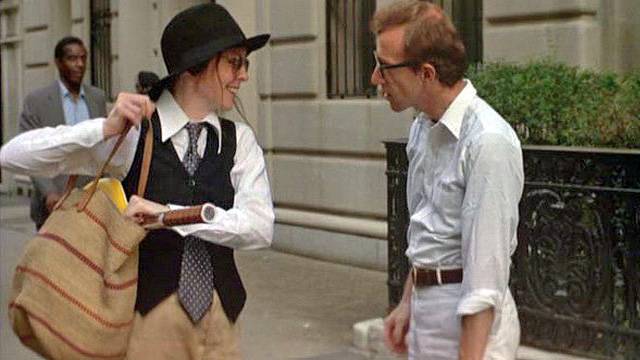
8. **’Annie Hall’ (1977)**:”
“Annie Hall” wasn’t just a romantic comedy; it was a seismic event that redefined the genre, tearing down conventional structures with its audacious mix of direct address to the camera, quirky vignettes like the lobster-cooking scene, and a pervasive sense of existential malaise. This Oscar-winning masterpiece plunged audiences into the neurotic psyche of Alvy Singer, Woody Allen’s alter-ego, as he became smitten with the eponymous WASP flibbertigibbet, brought to life with an iconic, effortlessly charming performance by Diane Keaton. It dared to be different, creating a template for countless others.
Beyond its groundbreaking narrative techniques, “Annie Hall” deftly explores profound themes. It functions in part as a nuanced study of American Jewish assimilation, grappling with cultural identity, and in part, as the universal, heartbreaking saga of falling in and out of love. The film’s genius lies in its ability to be more than the sum of its perfect, often hilarious bits, weaving together deep personal introspection with an engaging, relatable storyline.
Indeed, the film is rich with memorable moments, from Christopher Walken’s chillingly quirky turn as Annie’s terrifying brother to the famously clumsy cocaine sneeze. Yet, it is the underlying melancholy, the poignant exploration of fleeting happiness, that cemented “Annie Hall” as a template for filmmakers. Diane Keaton’s portrayal, a dream woman with a deep soul beneath all her “la di das,” remains a benchmark for complex, captivating heroines, ensuring its enduring legacy.
Read more about: Behind the Hollywood Curtain: The Brutal Editing Processes That Forged Blockbuster Legends
9. **’Hester Street’ (1975)**
Joan Micklin Silver’s stunning debut, “Hester Street,” stands as a remarkable cinematic artifact, transporting viewers not merely to the 1970s, but back to the late 19th Century on New York’s Lower East Side. Shot in evocative black-and-white and frequently featuring dialogue in Yiddish, the film offers an authentic glimpse into the lives of Jewish immigrants. The narrative initially frames itself around Jake, formerly Yankel, a man convinced of his thriving success in his new American home.
However, the film deftly, and heartbreakingly, shifts its perspective with the arrival of Jake’s wife, Gitl, portrayed with breathtaking vulnerability and strength by Carol Kane. Jake is disgusted by Gitl’s “old world ways,” cruelly demanding that she assimilate – yet, paradoxically, not so much that she abandons her traditional place. These conflicting instructions highlight the immense pressures placed upon immigrants, caught between preserving their heritage and conforming to a new culture.
Silver, with profound insight, cedes the film’s emotional weight to Carol Kane’s incredible, Oscar-nominated performance. Kane inhabits Gitl with a wide-eyed worry and quiet resilience, allowing her to adapt to her environment in her own unique way. “Hester Street” thus becomes a powerful, compassionate landmark, celebrating the unwavering spirit of those who navigate cultural divides, proving that true strength often lies in quiet adaptation.
Read more about: Remembering Sir Sean Connery: An In-Depth Look at the Enduring Legacy of a Cinematic Titan
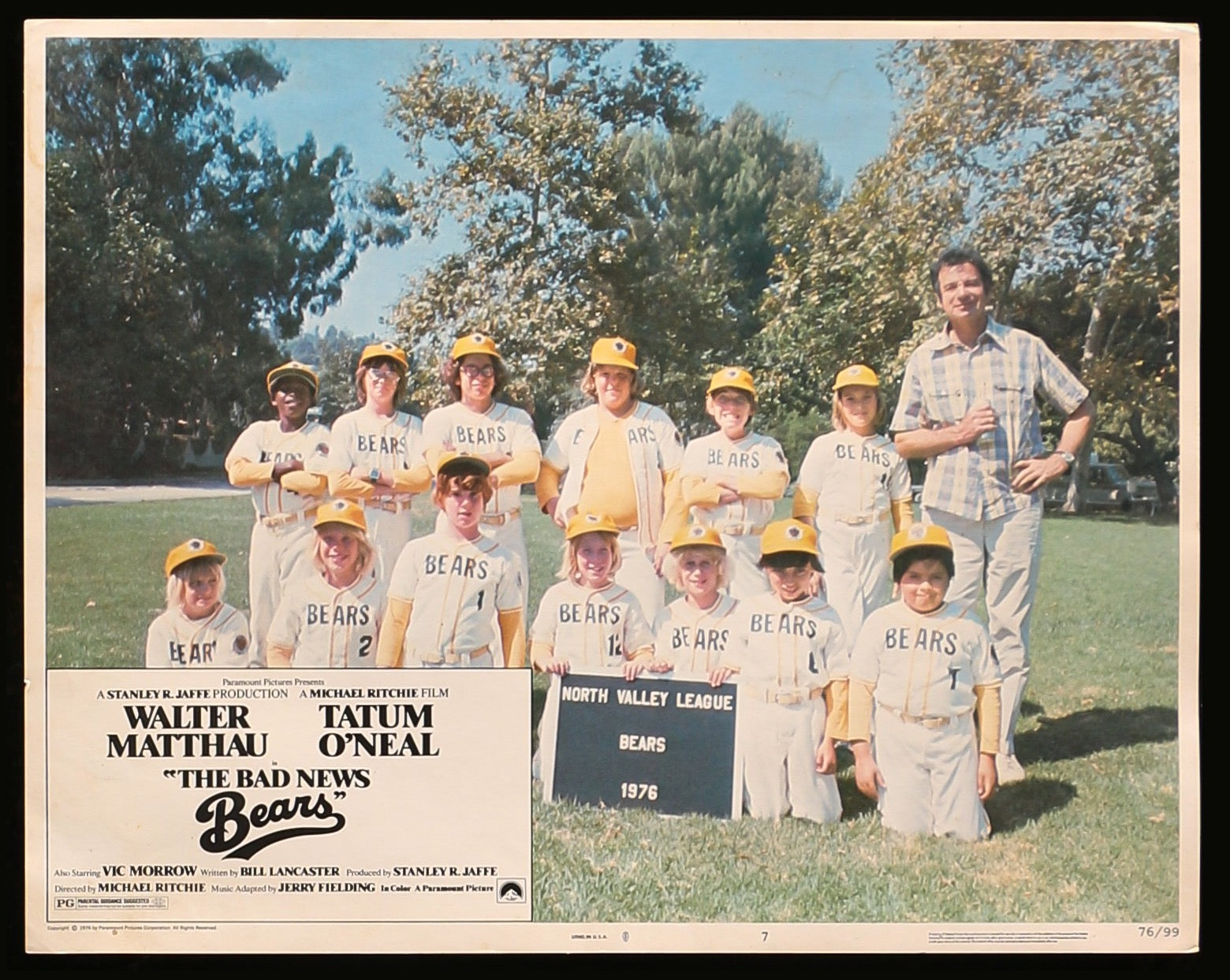
10. **’The Bad News Bears’ (1976)**:
The Bicentennial summer of ’76 saw “The Bad News Bears” emerge as an instant classic, presenting a Little League squad of defiant misfits who, to audience delight, cussed like seasoned Marines. Michael Ritchie’s groundbreaking comedy, beneath its irreverent surface, delivered one of the most emotionally accurate and genuinely funniest sports movies ever made, redefining what a family-friendly film could be with its unique blend of profanity and heart.
At the heart of this enduring cinematic gem is Walter Matthau in a career-defining role as Buttermaker, the cigar-chomping, whiskey-swilling drunk coach. The Bears, a perennial underdog squad, begin to turn their fortunes around with the addition of girl pitcher Tatum O’Neal, whose talent challenges gender norms, and delinquent Jackie Earle Haley, injecting grit and unexpected skill.
Every kid became a cult hero: Lupus, who mixes the coach’s martinis; Engelberg, reminding Buttermaker about open whiskey bottles; and Ogilvie, pop culture’s first baseball stats geek. The film culminates with Tanner’s unforgettable defiance: “Hey Yankees — you can take your apology and your trophy and shove ‘em up your ass!” “The Bad News Bears” is a hilarious, heartfelt ode to underdogs and bad attitudes.
Read more about: Rewind to Reconsider: 10 Classic Comedies That Would Never Get Greenlit in Today’s Hollywood
11. **’Smokey and the Bandit’ (1977)**:
“Smokey and the Bandit” isn’t merely a film; it’s a cultural phenomenon, revered as the ultimate Southern-fried good ol’ boy comedy, the quintessential Burt Reynoldsian adventure of the 1970s, and for many, the undisputed “Citizen Kane of Redneck Cinema.” This high-octane, laugh-out-loud romp perfectly captured the spirit of outlaw freedom and fast cars that permeated the era, cementing its place as an indelible piece of Americana.
The plot, a masterclass in delightful absurdity, centers on the legendary bootlegger known as the Bandit, played with unparalleled charisma by Reynolds, and his faithful partner “Snowman” (country musician Jerry Reed). Their mission: to transport a truckload of illegal Coors beer from Texarkana to Atlanta in a little over a day. This challenge quickly escalates with the addition of Sally Field’s feisty runaway bride and a relentless posse of “smokeys” led by the unforgettable Sheriff Buford T. Justice, Jackie Gleason at his comedic finest.
Stuntman-turned-director Hal Needham, a longtime Reynolds buddy, expertly tapped into his star’s inherent charm and impeccable comic timing, realizing the explosive appeal of combining car chases, trucker culture, and “Hee-Haw” level humor. Initially D.O.A. upon release, its fortunes dramatically changed when Universal wisely decided to concentrate its marketing efforts directly on the Southern theater market. “Smokey and the Bandit” then took off faster than state troopers in hot pursuit, becoming a beloved, enduring classic with its blend of automotive mayhem and irresistible charm.
Read more about: Beyond the Bandit’s Charm: Unearthing the Intricate Life and Lingering Questions Surrounding Burt Reynolds’ Enduring Legacy

12. **’Wanda’ (1970)**:
Barbara Loden’s sole feature film, “Wanda,” stands as a profoundly stark and unflinching portrait of a broken spirit, a cinematic achievement so bleak it pushed the boundaries even by the era’s often grim standards. As writer, director, and lead actor, Loden delivered a deeply personal and raw depiction of a woman adrift, a testament to her extraordinary vision and resilience in a male-dominated industry.
The narrative follows Wanda, a woman who has just left her husband and subsequently lost her factory job, embodying a pervasive sense of powerlessness. She passively drifts through life, teaming up with a small-time crook, flitting from barstool to backseat with the profound resignation of a prisoner who has long since abandoned any dreams of escape. This portrayal is not just a character study; it’s a meditation on societal expectations and the profound paralysis they can induce.
Loden’s challenging and unconventional screenplay initially attracted little interest from the industry, leading her to bravely take on the director’s chair herself. Since its debut, “Wanda” has been rightfully recognized as a compassionate, highly personal landmark of American independent cinema, and an object of fascination for writers and filmmakers intrigued by Loden’s short life and her extraordinary, empathetic sense of humanity.
Read more about: The Engines That Defined an Era: From Historic Roars to Modern Thunder, Discover the Ultimate Muscle Car Powerhouses
13. **’Rock ‘n’ Roll High School’ (1979)**:
For a brief but incandescent “1-2-3-4!” moment, the iconic Ramones transcended their status as punk rock legends and became bona fide movie stars, delivering their own black-leather-clad answer to “A Hard Day’s Night.” Director Allan Arkush’s gloriously anarchic exploitation flick served as the ultimate gateway drug for countless nascent punk fans, playing with expectations and offering an unadulterated dose of pure rock ‘n’ roll rebellion.
The film’s undisputed hero is P.J. Soles as Riff Randall, the quintessential punk rebel who famously tells her evil principal (the inimitable Warhol Factory dominatrix Mary Woronov), “I’m a teenage lobotomy!” Centering the narrative around this fierce feminist fangirl was a profoundly prophetic move, cementing “Rock ‘n’ Roll High School” as a sacred text for the burgeoning 1990s riot-grrrl revolution, its influence echoing even in anthems like Sleater-Kinney’s “I Wanna Be Your Joey Ramone.”
“Rock ‘n’ Roll High School” truly peaks with a blazing live set where Da Bruddas — Joey, Johnny, Dee Dee, and Markie — bash out anthems like “Blitzkrieg Bop” and “She’s The One” with their characteristic furious energy. For the film’s unforgettable climax, they heroically assist Riff in blowing up the school, a chaotic, cathartic act of defiance. It’s a glorious, noisy celebration of youthful rebellion, punk ethos, and the liberating power of rock ‘n’ roll, a vibrant rallying cry of “Gabba gabba hey!” that continues to inspire.
14. **’Small Change’ (1976)**:
François Truffaut, a filmmaker whose own difficult childhood profoundly shaped his artistic sensibilities, consistently demonstrated an acute sensitivity to the perils faced by children. “Small Change,” a charming yet deeply insightful slice of life set amongst the children of the French city of Thiers, fits perfectly within this thematic thread, drawing clear parallels to his earlier, equally poignant examinations of youth such as “The 400 Blows.”
The narrative of “Small Change” masterfully weaves together a variety of childhood experiences, ranging from the purely whimsical to the undeniably bittersweet. Its focus notably turns to the story of Julien (Philippe Goldmann), a boy whose severe abuse at home initially goes tragically unnoticed by his teachers and classmates. Truffaut, however, integrates Julien’s harrowing story not as a standalone tragedy, but as a vital thread within a larger, more hopeful tapestry, showing the resilience and shared experiences that define childhood.
This film, often hailed as a tour de force on a miniature scale, showcases Truffaut’s unparalleled ability to observe and articulate the nuanced realities of growing up. From first crushes and schoolyard antics to moments of profound vulnerability and unexpected courage, “Small Change” captures the essence of childhood with authenticity and grace. It’s a testament to Truffaut’s enduring legacy as a filmmaker who not only understood children but also celebrated their spirit, delivering a work that continues to resonate with its honest, compassionate portrayal of youthful innocence.
Read more about: Why We Still Adore Them: A Deep Dive into the Most Gloriously Awkward ’80s Cars That Were So Ugly, They Became Icons
15. **’Pat Garrett & Billy the Kid’ (1973)**
Sam Peckinpah, a master of the revisionist Western, delivered one of his most elegiac odes to the fading frontier with “Pat Garrett & Billy the Kid.” This cinematic masterpiece features Kris Kristofferson in a definitive portrayal of the wild-eyed outlaw Billy the Kid, and James Coburn as the cynical sheriff Pat Garrett, who is tragically hired to hunt down his old friend. It’s a story steeped in the inevitable decline of a certain way of life, painted with Peckinpah’s signature blend of brutal realism and poetic melancholy.
Adding another layer of American mythos to the film, Peckinpah famously cast Bob Dylan, a kindred spirit and poetic voice of his generation, in his first dramatic role. Dylan portrays a wily drifter named Alias, a character handy with both a guitar and a switchblade. Dylan’s signature song, “Knockin’ on Heaven’s Door,” became an instant classic, playing with heartbreaking poignancy as the dying gunslinger Slim Pickens sits by the river with his wife, Katy Jurado, two legends witnessing that long black cloud coming down, a scene that has become one of cinema’s most iconic death sequences.
In a sadly typical story of studio interference, Peckinpah’s original vision for “Pat Garrett & Billy the Kid” was severely botched upon its initial release, leading to a compromised version. It wasn’t until the release of the 1988 director’s cut that the film finally received the recognition it deserved, cementing its place as one of Peckinpah’s masterworks and a definitive “Last Waltz of Westerns.” This film, full of renegades beaten down by the road, endures as a powerful and essential piece of cinematic history.
As our journey through these 15 cinematic treasures of the 1970s concludes, it becomes undeniably clear why this decade remains a fertile ground for cinephiles and critics alike. From the audacious genre deconstructions of “Annie Hall” to the stark, raw humanity of “Wanda,” and the mythic, elegiac farewells of “Pat Garrett & Billy the Kid,” these films weren’t merely reflecting their times; they were actively shaping the very language of cinema. They challenged, provoked, entertained, and moved audiences, proving that true artistry, courage, and vision are indeed timeless. These movies, in their diverse glory, continue to speak to us, ensuring that the classics are, truly, never outdated, inspiring new generations to revisit, rediscover, and revel in the profound power of storytelling that defines this extraordinary era of American filmmaking.











